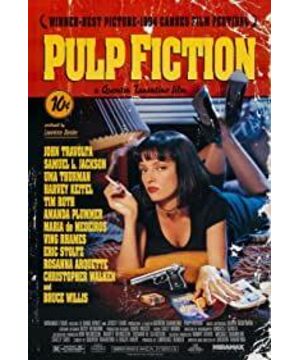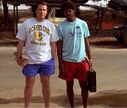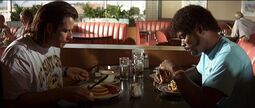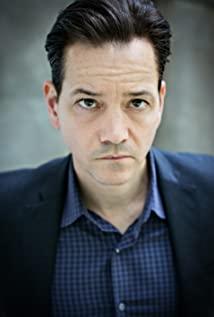glimpse into the narrative of "Pulp Fiction"
Quentin Tarantino appears to be somewhat subversive. His 16-year-old mother gave birth to him in a wave of sexual liberation and named him after the protagonist of the movie. This has to be said to be some kind of chance.
Thirty-one years later, Quentin took the Palme d'Or in Cannes with "Pulp Fiction", and a few months later, he won the Oscar for Best Original Screenplay. This so-called subversive work officially helped Quentin to become a Hollywood star director, and "Quentin-style narrative" became a topic of discussion for everyone. This article attempts to analyze and sort out the narrative structure of the film to a limited extent, trying to grasp the narrative characteristics of Quentin's script.
Regardless of the film language, after restoring "Pulp Fiction" to a textual state, we can find that Quentin's narrative has a certain literary characteristic. The film tells four independent and interrelated stories, organized in the way of novel chapters, with shady scenes and subtitles separating each story. Then combined with film features, the time sequence of the story was disrupted, cut, disrupted, and reorganized. A character named Vincent is used throughout the narrative as a clue, making the narrative ingenious and not chaotic. We can list the following narrative diagrams in this way.
1 A couple of botched robbers prepare to robbery in a fast food restaurant.
2 Vincent and Jules went to the apartment to grab the cash box and kill.
3 The boss bought boxer Butch in the bar, Vincent and Butch met for the first time.
4 Vincent buys drugs.
5 Vincent was ordered to accompany the boss's wife Mia, Mia was over-drugged, Vincent saved her.
6 Butch counter bet to himself and won the game. When he was about to run away with his girlfriend, he found that the gold watch was lost, and killed Vincent when he went back to retrieve it.
7 Vincent and Jules recount the story in the apartment. Kill people by mistake and dispose of corpses.
8 Recounts of the robbery of a couple in a fast food restaurant, and Jules's education on them.
Many researchers have exhausted various narrative lines. The author mainly adopts the viewpoints of Professor Hao Jian of the Film School. On this basis, Vincent's clue role is emphasized. According to Quentin's narration in the script, he told a total of three stories: asking for stolen money, dinner, and gold watch. The author further supports Professor Hao Jian’s view that the script actually narrates four stories. The robbery of the fast food restaurant is another story independent of the demand for stolen money. In this way, we can find that the above schematic diagram can become another form:
a fast food restaurant robbed 1, 8
2 asking for stolen money 2, 7
3 dinner 4, 5
four gold watches 3, 6
Our discovery is that it is a single time In terms of narrative order, the first story is placed at the beginning and end, and the order is completely reversed. This reversal also includes a short overlapping period of time. For this period, Quentin used a technique called back narration and changed the narrative perspective to fully explore the superiority of film to the visualization of literature. feature. The robbery action of the robber couple in the opening film is reproduced from the perspective of Jules. As in paragraph 7, the mysterious six shots that cannot be killed are reproduced from the perspective of the mysterious fourth person. Doing so can at least avoid visual fatigue of the audience, and more importantly, provide more information to give the audience a breakthrough information harvest, so that the audience can get pleasure and satisfaction from the narrative. This kind of technical repetition in the sense of narratology makes Quentin's films covered with a strange and subversive color.
As far as the second and fourth stories are concerned, there is no time inversion in the narrative sequence, but they are staggered with each other, showing a shrinking narrative form on the chart. Especially emphasized the existence of the clue figure of Vincent. Although these two stories are not related in nature, Butch met and killed the second and third protagonists of the story in his apartment, and killed him. It is the intersecting of several story lines, which also confessed. Clear the time relationship between the various segments, giving the audience an opportunity to reintegrate. Vincent was shot and killed in 6 and reappeared in 7, and the audience was finally able to gradually see the shadows in the chronological order between the publication blocks in a cloud of fog. In fact, more meaning of this kind of interleaving comes from the control of the rhythm of the image. We can find that the passages that give the audience a strong stimulus visually are 2, 6, and in the third story separated in the middle, only 5 stimuli are strong. , But with its romantic and popular cultural display, it is different from the violent sensory stimulation in 2 and 6, and the paragraphs in the middle are transitional paragraphs. Quentin is good at using this seemingly idle transition. The mood of the film develops in a completely inexplicable direction, and then suddenly the audience is pulled back to increase the intensity of sensory stimulation.
And, combined with story one, we can find that in paragraph 1, the robber couple raised their guns, and the story reached its climax. Quentin suddenly waved his scissors and started telling the second story, and in the narrative it came out inexplicably in the apartment. When the fourth person in the fold of the strange expressions of Vincent and Jules slid the gun, he stopped again and entered the third story. This narrative method of infinite violence for the audience artificially brought the suspense to the highest point. , And then cracked at the end of the film, and then violently threw the pleasure to the audience.
The most complete and normal narrative is the narrative of the third story, but I think this may be because the story itself is too irritating, dance hall, dance, drugs, drug overdose, and Vincent’s crazy speeding car itself. It was declared that this section of the road could not be blocked and reorganized, and the peculiar strength inherent with the body did not need to be strengthened with structure, otherwise it would be counterproductive.
Through our reorganization and analysis, we can at least find that Quentin, a narrative genius, has recklessly cut, assembled, and reproduced the plot in terms of narrative structure, but cleverly added some detailed sentences to the next chapter. The suggestive suggestive hints, and always emphasize the whereabouts of clue characters, so that the plot is complete, broken and not chaotic. Draw a circle-shaped narrative to the fullest circle.
However, the fact is that no matter how ingenious and subversive it appears on the surface, Quentin is essentially a child who has grown up in Hollywood classic narratives. His subversion is only a subversion within the classic genre. Subversion, it just looks beautiful. Genius is in the soil, it is the genius in the soil.
View more about Pulp Fiction reviews











